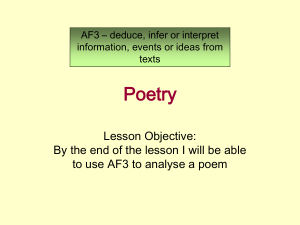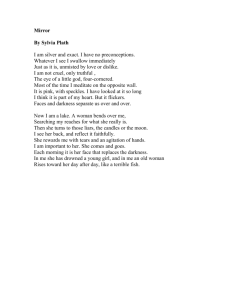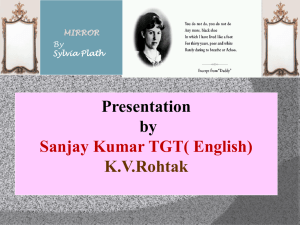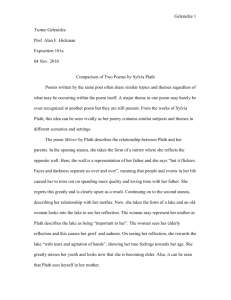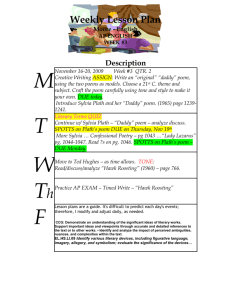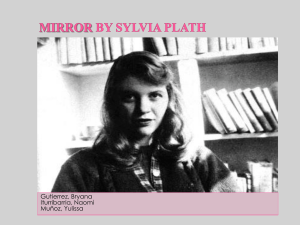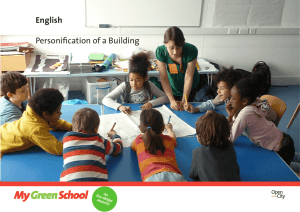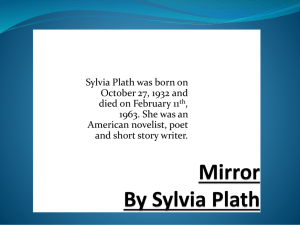Personification in Sylvia Plath's "Mirror" Worksheet
advertisement
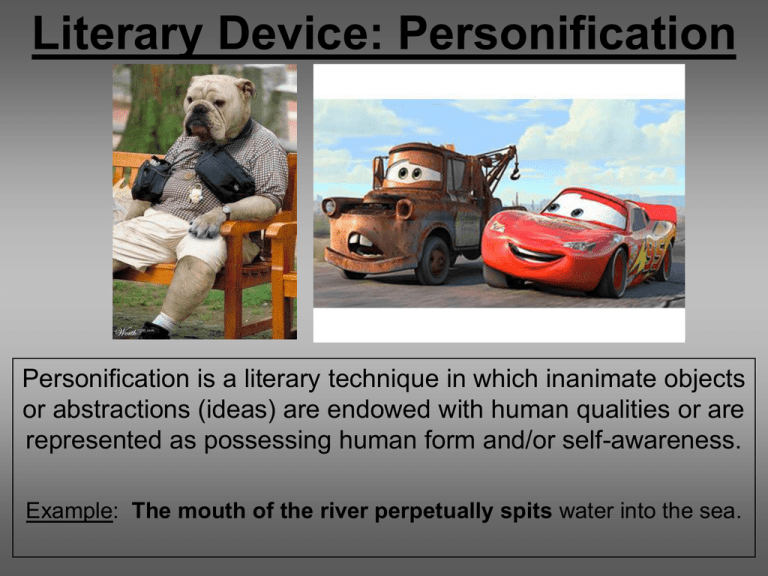
Literary Device: Personification Personification is a literary technique in which inanimate objects or abstractions (ideas) are endowed with human qualities or are represented as possessing human form and/or self-awareness. Example: The mouth of the river perpetually spits water into the sea. “Mirror” Sylvia Plath I am silver and exact. I have no preconceptions. Whatever I see, I swallow immediately. Just as it is, unmisted by love or dislike I am not cruel, only truthful – The eye of a little god, four-cornered. Most of the time I meditate on the opposite wall. It is pink, with speckles. I have looked at it so long I think it is a part of my heart. But it flickers. Faces and darkness separate us over and over. Now I am a lake. A woman bends over me. Searching my reaches for what she really is. Then she turns to those liars, the candles or the moon. I see her back, and reflect it faithfully She rewards me with tears and an agitation of hands. I am important to her. She comes and goes. Each morning it is her face that replaces the darkness. In me she has drowned a young girl, and in me an old woman Rises toward her day after day, like a terrible fish. “Mirror” – Author’s Purpose • What two things are personified within the poem? (Hint: Notice the title of the poem.) A _______ mirror and a _____. lake • Select at least three adjectives describing the emotional state or tone of each object: Stanza 1 Stanza 2 Truthful Faithful Lonely Important Exact Isolated “Mirror” – Author’s Purpose • How are these personified objects similar? What are their differences within the poem? _________________________________________ Both the mirror and the lake seem to be hungry for interaction. _________________________________________ But only the mirror seems unappreciated and unnoticed. • What are the implications of the phrase “drowned a young girl” and the simile “like a terrible fish” at the end of the poem? Both poetic phrases point toward the changing nature of _________________________________________ the lake’s reflection and, more importantly and directly, the _________________________________________ _________________________________________ female figure’s ever-altering face reflected there. “Mirror” – Author’s Purpose • What could both of the personified objects within the poem represent or symbolize? Keeping in mind that Sylvia Plath was a feminist poet, the _________________________________________ _________________________________________ mirror and lake could represent the race that females often run against the onslaught of time in terms of physical beauty. _________________________________________ • What is the author’s overall poetic purpose or message? How does the personification support and develop this poetic theme? Sylvia Plath is exploring the strain of a culturally-heightened _________________________________________ human struggle with time. By seeing this transformation from _________________________________________ these personified perspectives the reader receives a true _________________________________________ _________________________________________ reflection – exact and unmisted by emotion. Answer the essay question below: • In Sylvia Plath’s “Mirror”, the author explores the passage of time through the lens of personified objects. In a well-organized response, complete with relevant text evidence and commentary, pinpoint how the poet utilizes personification and symbolism to develop her poetic theme. Red – Major Writing Task Blue – Minor Insights/Instructions

